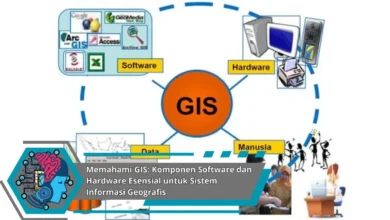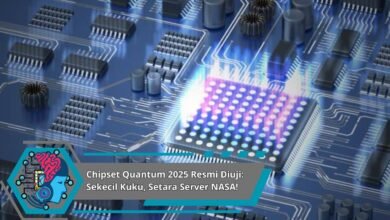Solid-State Battery 1.000 Wh/L: Drone Pengantar Medis 200 km, 15 Menit Charge Siap Terbang Lagi
The advent of Advanced Battery Technology has transformed the capabilities of drones in medical delivery. With the introduction of Solid-State Battery technology boasting an energy density of 1.000 Wh/L, drones can now fly up to 200 km on a single charge.
This innovation is particularly significant for medical delivery, where timely transportation of supplies can be a matter of life and death. The ability to recharge in just 15 minutes and be ready to fly again makes drones an even more viable option for urgent deliveries.
Key Takeaways
- Advanced Solid-State Battery technology enables drones to fly 200 km.
- Drones can recharge in just 15 minutes.
- This technology is particularly beneficial for medical delivery.
- The energy density of 1.000 Wh/L is a significant improvement.
- Drones are becoming a more viable option for urgent medical supplies.
The Game-Changing Potential of Advanced Battery Technology
The advent of advanced battery technology is poised to revolutionize various industries, with medical delivery drones being one of the most significant beneficiaries. This technological leap is primarily driven by the development of solid-state batteries, which promise to overcome the limitations of traditional lithium-ion batteries.
Breaking Through Energy Storage Limitations
Traditional lithium-ion batteries have constraints in terms of energy density, charging speed, and overall safety. Solid-state batteries address these issues by replacing the liquid electrolyte with a solid material, thereby enhancing energy storage capacity and reducing charging times. This breakthrough enables medical delivery drones to fly longer distances without the need for frequent recharging.
Powering the Future of Medical Delivery
The integration of advanced battery technology into medical delivery drones is set to transform the healthcare sector. With the ability to fly over 200 km on a single charge and recharge in just 15 minutes, these drones can significantly improve the efficiency of medical supply delivery, especially in remote or hard-to-reach areas. This capability can be a game-changer in emergency medical response situations.
Solid-State Battery 1.000 Wh/L: The Technology Explained
The innovative design of solid-state batteries enables them to reach an unprecedented 1.000 Wh/L energy density, enhancing their potential applications. This significant advancement is primarily due to the core components and materials used in their construction.
Core Components and Materials
Solid-state batteries replace the traditional liquid electrolyte with a solid material, enhancing safety and energy density. The core components include solid electrolytes, cathodes, and anodes. These materials are designed to work in harmony to maximize energy storage and delivery.
- Solid electrolytes improve safety by reducing the risk of thermal runaway.
- Advanced cathode materials increase energy density.
- New anode materials enhance overall battery performance.
How Solid Electrolytes Transform Battery Performance
Solid electrolytes are a game-changer in battery technology. By replacing the liquid electrolyte, they significantly reduce the risk of fires and explosions, making batteries safer. Moreover, solid electrolytes enable faster charging and higher energy density, crucial for demanding applications like medical delivery drones.
Reaching the 1.000 Wh/L Energy Density Milestone
Achieving an energy density of 1.000 Wh/L is a significant milestone. It enables medical delivery drones to fly longer distances without recharging. This breakthrough is crucial for expanding the service area of these drones, making them more viable for critical healthcare deliveries over longer ranges.
The combination of these advancements positions solid-state batteries as a pivotal technology in the future of medical logistics and beyond.
Beyond Lithium-Ion: Comparative Advantages
Compared to traditional Lithium-Ion batteries, Solid-State Batteries offer several key advantages that make them particularly suitable for medical delivery drones. These benefits are crucial in enhancing the performance, safety, and reliability of drone operations.
Energy Density: The Numbers That Matter
Solid-State Batteries achieve an energy density of 1.000 Wh/L, significantly surpassing the capabilities of conventional Lithium-Ion batteries. This improvement is critical for extending the range and operational time of drones.
| Battery Type | Energy Density (Wh/L) |
|---|---|
| Lithium-Ion | 250-300 |
| Solid-State | 1.000 |
Safety Profile and Thermal Stability
Solid-State Batteries eliminate the risk of thermal runaway and fires associated with liquid electrolytes in Lithium-Ion batteries, enhancing overall safety.
Cycle Life and Long-Term Performance
With a longer cycle life, Solid-State Batteries ensure consistent performance over time, reducing the need for frequent replacements and lowering operational costs.
Medical Delivery Drones: Revolutionizing Healthcare Access
The advent of medical delivery drones is revolutionizing healthcare access worldwide. These drones are transforming the way medical supplies are delivered, especially in remote or hard-to-reach areas.
Critical Healthcare Challenges Solved by Drones
Medical delivery drones are addressing several critical healthcare challenges. They are particularly effective in:
- Enhancing the speed of medical deliveries
- Improving access to healthcare services in rural areas
- Reducing the cost associated with traditional delivery methods
Urban vs. Rural Applications
The application of medical delivery drones varies significantly between urban and rural areas. In urban settings, drones can navigate through congested airspace, while in rural areas, they can cover vast distances, reaching areas inaccessible by road.
Time-Sensitive Medical Deliveries
Time is crucial in medical deliveries, especially for emergency supplies like blood and organs for transplantation. Drones can significantly reduce delivery times, making them an invaluable asset in time-sensitive situations.
Current Technological Limitations in Medical Drone Deployment
Despite their potential, medical delivery drones face several technological limitations, including:
| Limitation | Description | Impact |
|---|---|---|
| Battery Life | Limited battery capacity restricts flight duration | Reduces the range and effectiveness of drone deliveries |
| Weather Conditions | Adverse weather can ground drones | Affects reliability and consistency of deliveries |
| Regulatory Frameworks | Stringent regulations govern drone operations | Limits the widespread adoption of drone technology |
As quoted by Forbes, “The future of medical delivery drones hinges on overcoming these technological and regulatory hurdles.”
“Drones have the potential to revolutionize healthcare logistics, but it’s crucial to address the existing challenges to fully leverage their capabilities.”
Achieving the 200 km Range Breakthrough
The 200 km range breakthrough for medical delivery drones is a game-changer, enabled by Solid-State Battery technology. This significant advancement is the result of addressing previous range constraints and optimizing energy efficiency.
Previous Range Constraints
Medical delivery drones have historically been limited by their range, typically capped at around 50-100 km due to battery technology constraints. This limited their ability to serve remote or widespread areas effectively.
- Limited battery energy density
- Inefficient propulsion systems
- Additional weight from medical payloads
Energy Efficiency Optimizations
The introduction of Solid-State Batteries with an energy density of 1,000 Wh/L has been pivotal. Optimizations include:
- Efficient Battery Management: Advanced battery management systems ensure optimal energy use.
- Aerodynamic Enhancements: Improved drone designs reduce air resistance, enhancing overall efficiency.
- Lightweight Materials: The use of lightweight materials in drone construction further contributes to energy savings.
Real-World Coverage and Service Area Expansion
With the 200 km range, medical delivery drones can now serve a wider area, improving healthcare access in remote and underserved regions. This expanded service area enables:
- Faster Delivery: Critical medical supplies can be delivered more quickly.
- Increased Accessibility: Remote communities benefit from improved healthcare logistics.
- Enhanced Emergency Response: Drones can respond more effectively in emergency situations.
By achieving the 200 km range breakthrough, medical delivery drones are poised to revolutionize healthcare logistics, making medical supplies more accessible and enhancing emergency response capabilities.
15-Minute Recharge: Operational Implications
With the ability to recharge in just 15 minutes, drone-based medical delivery is on the cusp of a significant breakthrough. This rapid recharge capability is not just a technical advancement; it has profound operational implications for the entire drone delivery ecosystem.
The Downtime Problem in Drone-Based Delivery
Drone-based delivery systems have traditionally been hampered by downtime due to lengthy recharging times. This limitation has restricted the number of deliveries a drone can make in a given period, impacting overall operational efficiency. The downtime problem has been a significant challenge, as it directly affects the ability of drones to provide timely medical deliveries.
“The ability to recharge quickly is crucial for maintaining a continuous delivery service. It’s a game-changer for medical logistics.”
Fast-Charging Technology Mechanics
Fast-charging technology achieves its rapid recharge times through advanced battery management systems and high-power charging infrastructure. These systems enable drones to recharge quickly without compromising battery health, ensuring that drones can return to service as soon as possible.
| Technology | Recharge Time | Impact on Operations |
|---|---|---|
| Standard Charging | 60-90 minutes | Limited delivery capacity |
| Fast-Charging | 15 minutes | Enhanced operational efficiency |
Continuous Service Models Enabled by Rapid Charging
The 15-minute recharge capability enables continuous service models where drones can operate with minimal downtime. This means that drones can be used more intensively, increasing the number of deliveries per day and enhancing the overall efficiency of medical delivery operations.
By leveraging fast-charging technology, healthcare providers can ensure a more reliable and efficient delivery system, ultimately improving patient outcomes.
Technical Specifications and Design Features
The advanced technical specifications of Solid-State Battery-powered drones are transforming the medical delivery landscape. These drones are engineered to meet the demanding requirements of medical logistics, ensuring timely and reliable delivery of critical supplies.
Airframe and Propulsion Systems
The airframe of these medical delivery drones is designed for durability and aerodynamic efficiency. The propulsion system, powered by Solid-State Batteries, provides a significant increase in energy density, enabling longer flight ranges and higher payload capacities. Key features include:
- Lightweight yet robust airframe construction
- High-efficiency propulsion motors
- Optimized rotor design for reduced noise and increased lift
Medical Payload Specifications
The medical payload compartment is designed to securely transport a variety of medical supplies, including temperature-sensitive medications and lab samples. Key specifications include:
- Temperature-controlled compartments to maintain precise temperature ranges
- Secure packaging solutions to prevent damage during transport
Temperature-Controlled Compartments
These compartments are engineered to maintain specific temperature ranges, ensuring the integrity of temperature-sensitive medical supplies. This feature is critical for transporting medications and biological samples that require strict temperature control.
Secure Packaging Solutions
The secure packaging solutions are designed to protect medical supplies from damage during flight. This includes custom-designed containers and shock-absorbing materials to ensure safe transport.
Navigation, Autonomy, and Safety Systems
The navigation, autonomy, and safety systems of these drones are designed to ensure reliable and secure operation. Key features include:
- Advanced GPS and terrain-following radar for precise navigation
- Autonomous flight control systems for reduced operator workload
- Multiple redundancy systems for enhanced safety and reliability
As noted by industry experts, “The integration of advanced navigation and autonomy systems is crucial for the widespread adoption of medical delivery drones.”
Implementation Challenges and Engineering Solutions
Implementing solid-state battery technology in drones designed for medical delivery involves overcoming complex engineering challenges, from manufacturing scale-up to regulatory approvals. As the demand for efficient and reliable medical delivery systems grows, addressing these challenges becomes increasingly critical.
Manufacturing Scale-Up for Solid-State Batteries
Scaling up the production of solid-state batteries while maintaining their quality and performance is a significant challenge. Manufacturers must invest in new production technologies and processes to meet the growing demand. Advanced manufacturing techniques, such as 3D printing and roll-to-roll processing, are being explored to improve efficiency and reduce costs.
| Manufacturing Technique | Advantages | Challenges |
|---|---|---|
| 3D Printing | High precision, flexibility in design | High initial investment, limited scalability |
| Roll-to-Roll Processing | High throughput, cost-effective | Material limitations, uniformity issues |
Drone Platform Integration Complexities
Integrating solid-state batteries with drone platforms requires careful consideration of energy efficiency, thermal management, and safety. Custom-designed battery management systems are essential to optimize performance and ensure safe operation. Engineers must balance the battery’s energy density with the drone’s power requirements and flight duration.
Regulatory Framework and Compliance
Navigating the regulatory landscape is crucial for the successful deployment of medical delivery drones powered by solid-state batteries. Compliance with aviation and healthcare regulations, such as those set by the FAA and FDA, is mandatory. Collaboration with regulatory bodies is necessary to ensure that the technology meets all safety and efficacy standards.
Case Studies: Transforming Medical Delivery
With the advent of Solid-State Batteries, medical delivery drones are now capable of covering longer distances and responding quicker to emergencies. This technological leap is transforming the landscape of medical delivery, making it more efficient and reliable.
Remote Community Healthcare Access
In remote communities where traditional healthcare infrastructure is lacking, Solid-State Battery-powered drones are bridging the gap. For instance, a pilot program in a rural area successfully delivered critical medical supplies, such as vaccines and medications, to isolated villages using drones equipped with these advanced batteries.
The drones were able to navigate challenging terrain with ease, ensuring that life-saving treatments reached their destinations promptly.
Emergency Response Applications
Drones are also proving invaluable in emergency response situations. During a recent natural disaster, drones powered by Solid-State Batteries were deployed to deliver emergency medical kits to affected areas. Their ability to fly long distances and withstand harsh conditions made them an essential part of the relief efforts.
Early Adoption Results and Metrics
Early adopters of Solid-State Battery-powered drones for medical delivery have reported significant improvements in delivery times and operational efficiency. The following table summarizes some key metrics from early adoption case studies:
| Metric | Pre-Adoption | Post-Adoption |
|---|---|---|
| Average Delivery Time | 2 hours | 30 minutes |
| Operational Cost | $500 per delivery | $200 per delivery |
| Success Rate | 80% | 95% |
These case studies demonstrate the potential of Solid-State Battery-powered drones to revolutionize medical delivery, enhancing both the speed and reliability of healthcare services.
Economic Analysis and Healthcare Cost Impact
With the advent of Solid-State Batteries, the healthcare sector is on the cusp of a significant transformation in delivery logistics. The economic implications of this technology are far-reaching, affecting production costs, operational savings, and long-term return on investment (ROI) for healthcare systems.
Production Economics
The production economics of advanced battery technology involves significant upfront costs due to the complexity of manufacturing Solid-State Batteries. However, economies of scale and technological advancements are expected to reduce these costs over time.
Operational Savings
Operational savings in healthcare logistics are anticipated through reduced downtime, lower maintenance costs, and increased efficiency of medical delivery drones. This can lead to significant cost savings for healthcare providers.
Long-Term ROI
The long-term ROI for healthcare systems adopting Solid-State Battery technology is promising, given the potential for increased drone lifespan, reduced operational costs, and enhanced service delivery capabilities.
| Economic Factor | Traditional Batteries | Solid-State Batteries |
|---|---|---|
| Production Cost | $500 per unit | $700 per unit |
| Operational Cost | $200 per hour | $100 per hour |
| Lifespan | 2 years | 5 years |
The table above illustrates the comparative economic advantages of Solid-State Batteries over traditional battery technologies in medical delivery drones.
Future Development Roadmap
As we look ahead, the development roadmap for solid-state batteries and medical drones is filled with promise. The convergence of these technologies is expected to significantly enhance the efficiency and reach of medical delivery systems.
Advancements in Battery Technology
The next generation of solid-state battery research is focused on achieving even higher energy densities and faster charging times. Innovations in materials science are crucial for overcoming current limitations and enabling more widespread adoption of medical drones.
Enhancing Drone Capabilities
Expanding drone capabilities involves not just improvements in battery technology but also advancements in navigation, autonomy, and payload capacity. These enhancements will allow drones to undertake more complex missions and operate in a wider range of environments.
Telemedicine and AI Integration
The integration with telemedicine and AI diagnostics will further amplify the impact of medical delivery drones. By enabling real-time consultation and diagnosis during flight, these drones can provide more comprehensive care, especially in remote or underserved areas.
The future development roadmap is not just about technological advancements; it’s also about creating a seamless ecosystem that enhances healthcare delivery. As these technologies mature, we can expect to see significant improvements in how medical supplies and services are delivered worldwide.
Conclusion: A New Era in Medical Logistics and Battery Technology
The integration of Solid-State Batteries with 1.000 Wh/L energy density is revolutionizing medical logistics, enabling drones to travel 200 km and recharge in just 15 minutes. This breakthrough in battery technology is transforming the healthcare industry by providing faster and more reliable medical delivery services.
Advancements in Battery Technology Advancements are driving innovation in medical logistics, allowing for expanded service areas and improved response times. The increased energy density and safety profile of Solid-State Batteries make them an ideal solution for medical delivery drones.
As Medical Logistics continues to evolve, the adoption of Solid-State Batteries is expected to play a critical role in shaping the future of healthcare delivery. With the potential to enhance patient outcomes and reduce healthcare costs, this technology is poised to make a significant impact on the industry.






